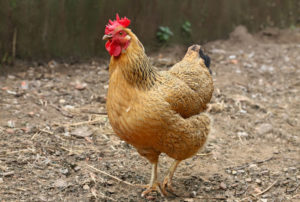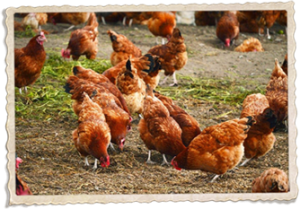Chickens have many distinguishable features, and among those are their plumes of feathers. These feathers aren’t just for looks; they also provide chickens with protection from the elements and help them fly, to name a few reasons. Understanding how your chickens’ feathers work can help you better take care of them. Read on to learn more:
Why do chickens have feathers?
While chickens can fly, they’re far limited than other bird species. So, if they’re not spending their time soaring in the skies, why do they have feathers in the first place? There are several reasons:
Evolution and the dinosaurs
Part of the reason chickens have feathers has to do with evolution. Modern birds are descended from dinosaurs. These gigantic creatures were often covered in feathers, even those like the Tyrannosaurus rex which could not fly. It’s hard to imagine that our quirky hens are even slightly related to the fearsome T-Rex, but scientists suspect that after an asteroid struck earth, killing the majority of dinosaurs, only smaller dinosaurs remained. These smaller cousins eventually evolved into modern birds.
Flight
Dinosaurs may have been the first feathered creatures, but why did birds keep their feathers all these years? It’s because feathers played a crucial part in their day-to-day lives. This includes allowing birds to fly. While chickens cannot fly far, they can fly to escape predators or reach hidden nesting places. This is why many chicken owners have to clip their chickens’ wings to prevent their hens from flying off.
Insulation
Much like animals have fur, chickens have feathers to keep themselves warm and cool. The fluffier their feathers, the better able they are to stay warm in the cold winter months. Tight feathered birds, meanwhile, are better able to stay cool during the summer months.
Waterproofing
Not many creatures like to get wet. Those that do often have fur or feathers that are waterproof.
Protection
Feathers can protect chickens from the elements as well as insects and predators. Think of their feathers as a shield.
Camouflage
Chickens sometimes need to blend into their surroundings to stay hidden from predators. This is why many chickens are brown, black, or gray, as it’s easier for them to blend into the natural world.
Courtship
Finally, a nice plumage of feathers can attract any mate. Roosters will often show off their feathers to impress a hen.
Anatomy of Chicken Feathers
A feather looks simple enough, but there are specific reasons why they’re constructed the way they are. The stem of the feather is known as the rachis, and the calamus or quill is the section where the rachis meets the skin. If you move out from the rachis you meet the feather vane which consists of various interlocked barbs. From there, the barbs can be divided into barbules, then hamuli or hooklets which hold the barbs together.
Types of Feathers
On the surface, feathers look all the same. But in all actuality, a chicken will have various types of feathers all over their body. These include the following:
- Contours: These feathers give a chicken its shape and main color
- Flight: Divided into primary and secondary flight feathers, these help a chicken fly
- Down: Down feathers keep chickens warm and insulated, it’s why we often use these feathers in our down jackets or comforters
- Semiplume: A cross between contour and down feathers, they add extra insulation
- Filoplume: These small feathers are attached to nerve endings and grow around the base of contour and semiplume feathers
- Bristles: Bristle feathers are located around the eyes and head
Have further questions about your chickens? Then contact Chickens for Backyards today!

